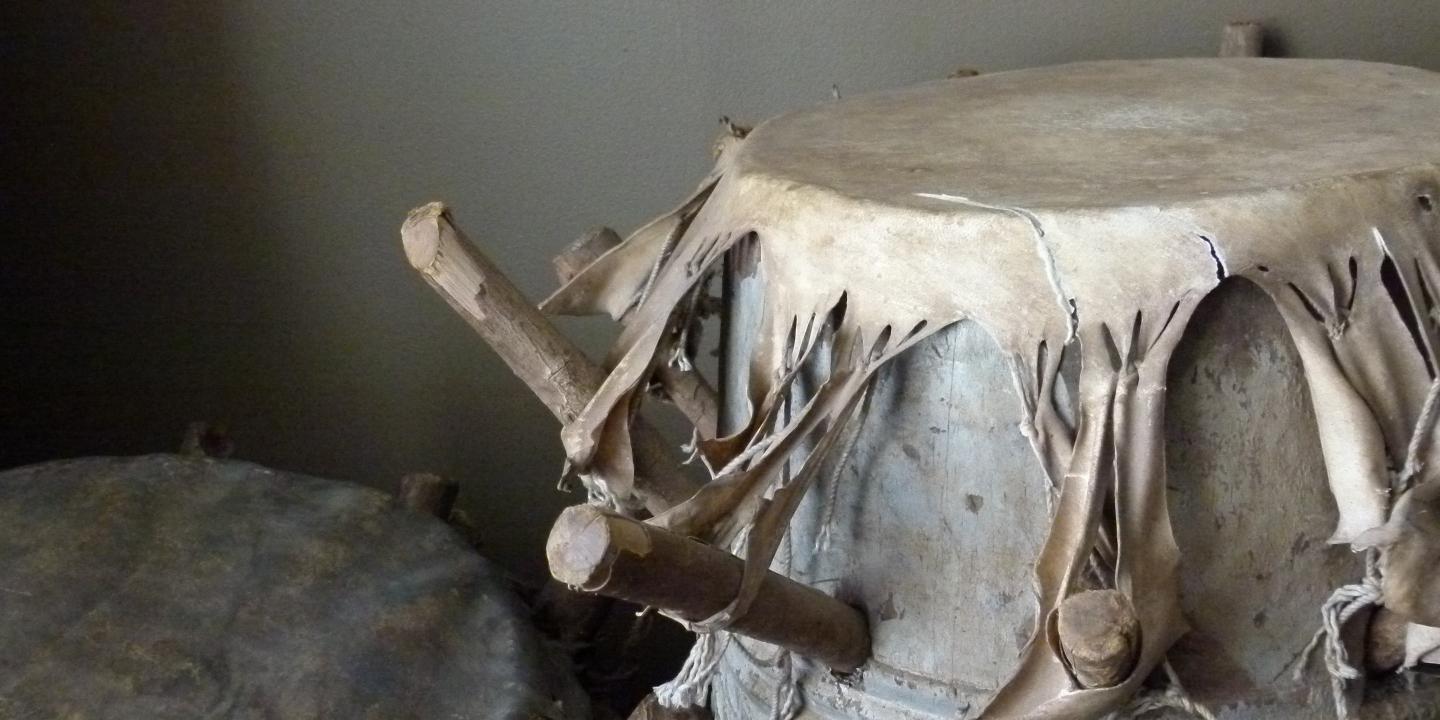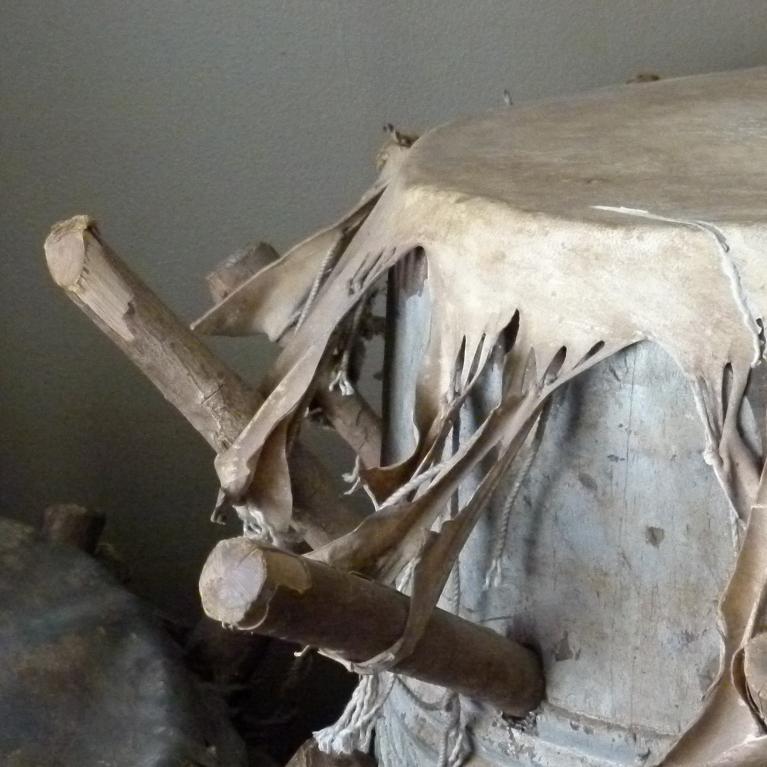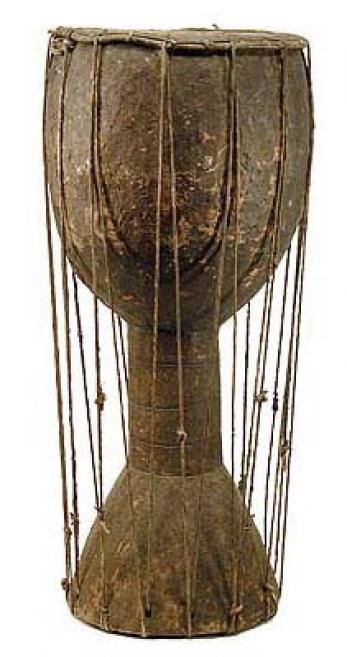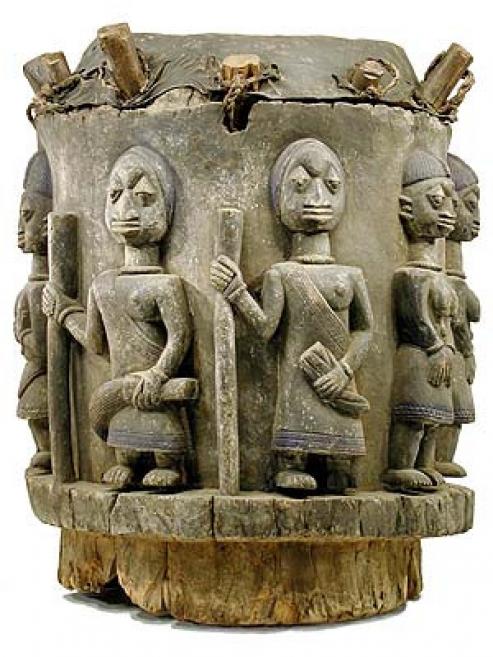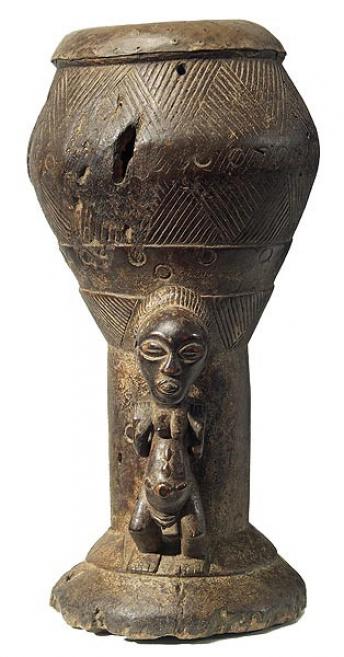Drums
Drums. Kuba, Luba, Yoruba, Senufo ethnic groups, West Africa, Congo Democratic Republic, Nigeria, Côte d'Ivoire
Drums are among the most important art forms in Africa, used both as a musical instrument and as a work of sculpture significant in many ceremonial functions, including dance, rituals, storytelling and communication of messages.
The most common and popular drums in West Africa are djembes, distinguished by their simple shapes and powerful sound. Talking drums are smaller and quieter than the djembes and get their name from the tonal range with which they can “speak” by squeezing and releasing the vertical strings. For centuries, the ‘talking drums’ were a primary source of communication between tribes used to transmit messages sometimes across great distances.
For Yoruba, the socio-religious role of the drum is infused in many segments of their ritual, community, and spiritual practice. The relationship between people and drums in Yoruba society provides access to spiritual and cultural information. The drum allows this information to be accessed through sound, symbols and rhythms. They are the bridge between domains, both sacred and secular.
Most Luba art relates to important chiefs, who defined their power by the display of prestige objects during ceremonies. Drums, among others, were the most important and show the fine carving for which the Luba are known. Objects were often embellished with a female figure because of the belief that women mediated between kings and the spirit world.
